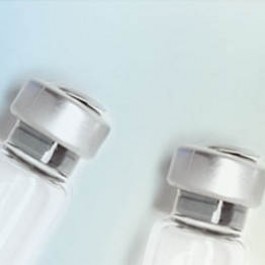uidA Rabbit Polyclonal Antibody
CAT#: AP20094BT-N
uidA rabbit polyclonal antibody, Biotin
Need it in bulk or conjugated?
Get a free quote
CNY 5640.00
货期*
5周
规格
Product images

Specifications
| Product Data | |
| Applications | ELISA, ID, IF, IP, R, WB |
| Recommend Dilution | This product is intended for use in precipitating and non-precipitating antibody-binding assays such as e.g., ELISA and Western blotting and Immunofluorescence or Histochemical techniques. Recommended Working Dilutions: Non-precipitating antibody-binding techniques: 1/1,000-1/10,000. |
| Reactivity | Escherichia coli |
| Host | Rabbit |
| Clonality | Polyclonal |
| Immunogen | Beta-Glucuronidase is isolated and purified from Escherichia coli. Freund’s complete adjuvant is used in the first step of the immunization procedure. |
| Specificity | The reagents were evaluated for potency, purity and specificity using most or all of the following techniques: Immunoelectrophoresis, Cross-Immunoelectrophoresis, single Radial Immunodiffusion (Ouchterlony), block titration, ELISA, Immunoblotting and Enzyme Inhibition. Cross-reactivities against enzymes of other sources may occur but have not been determined. |
| Isotype | IgG |
| Formulation | PBS, pH 7.2 without preservatives and foreign proteins. Label: Biotin State: Lyophilized IgG fraction. Label: Conjugation Procedure: A proprietary technique for the binding to biotin is used, followed by several purification steps. After each step activity and specificity are tested in a variety of techniques. The conjugate is lyophilized to assure stability and long shelf life. Molar radio: Biotin/IgG~ 6.2 |
| Reconstitution Method | Restore by adding 1.0 ml of sterile distilled water. |
| Concentration | lot specific |
| Purification | Ammonium Sulphate Precipitation and Ion Exchange Chromatography. |
| Conjugation | Biotin |
| Storage Condition | Store lyophilized at 2-8°C for 6 months or at -20°C long term. After reconstitution store the antibody undiluted at 2-8°C for one month or (in aliquots) at -20°C long term. Avoid repeated freezing and thawing. |
| Database Link | |
| Background | Reporter genes are widely used for studying the expression of foreign genes in transformed plants tissues. Using appropriate promoter-reporter gene constructs, this technique allows an independent verification of the transformed status of tissues growing on media containing selective antibiotics or herbicides. In addition, it serves as a principal means to follow gene transfer and monitor genetic transformation of plant species. Encoded by the E. coli GUS gene (also referred to as uidA), GUS protein is a hydrolase that catalyses the cleavage of a variety of beta-glucuronide derivatives available for colorimetric, fluorimetric and histochemical assays. Several features make the gus gene superior as a reporter gene for plant studies and in the production of genetically engineered crops. |
| Synonyms | GUSB, Beta-G1 |
| Reference Data | |
Documents
| Product Manuals |
| FAQs |
| SDS |
Resources
| 抗体相关资料 |
Customer
Reviews
Loading...


